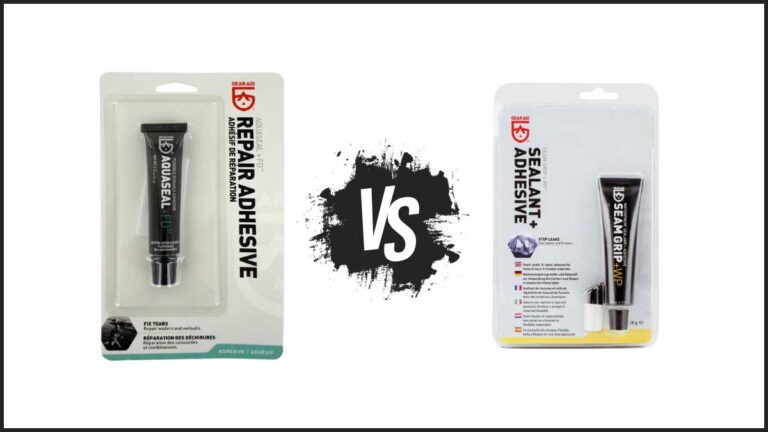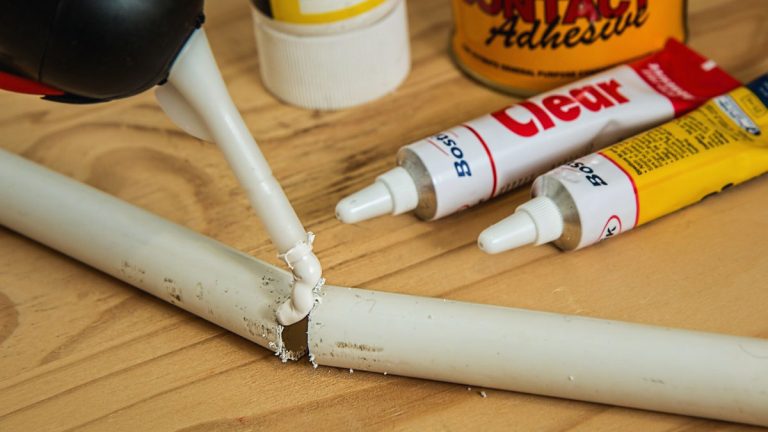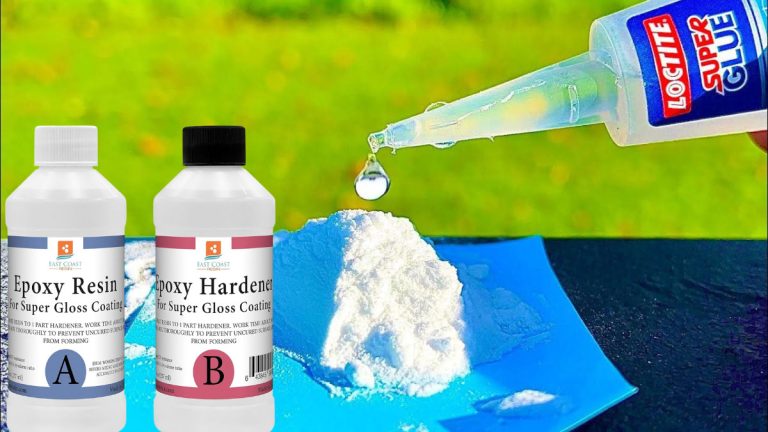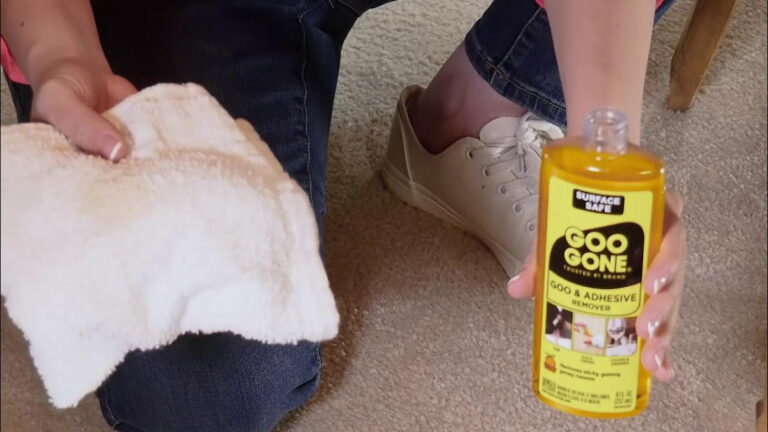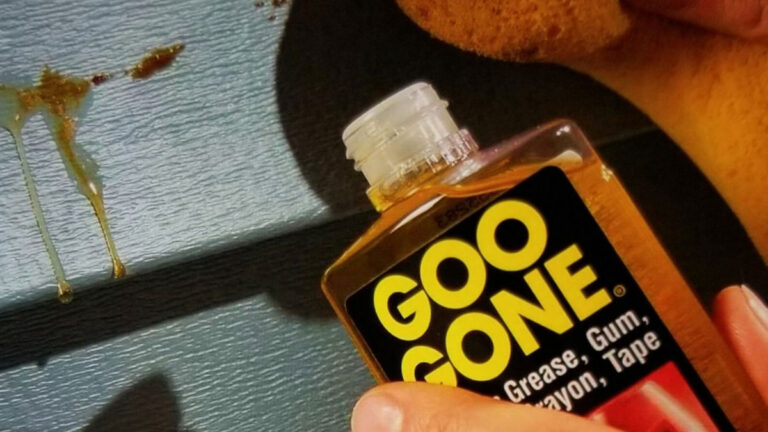Silicone Sealant vs Adhesive: Key Differences Explained
When tackling home improvement projects, choosing between silicone sealant and adhesive can feel overwhelming. Both materials boast unique properties and serve distinct purposes, making it crucial to understand their differences before diving into your next DIY task.
Silicone sealants are renowned for their flexibility and water-resistant qualities, perfect for sealing gaps in bathrooms and kitchens. On the other hand, adhesives provide a strong bond for various materials, ensuring your fixtures stay firmly in place. Knowing when to use each can save you time, money, and frustration, ensuring your projects are both durable and effective.
Key Takeaways
- Silicone Sealants vs. Adhesives: Silicone sealants offer flexibility and water resistance, ideal for sealing gaps in bathrooms and kitchens. Adhesives provide a strong bond for various materials and are better suited for mounting fixtures and bonding surfaces.
- Strength and Form: Silicone sealants have a lower lap shear strength (<1000 psi) and remain flexible, making them suitable for gap filling. Adhesives, with a higher lap shear strength (>1000 psi), are rigid and durable for strong bonding.
- Key Components and Characteristics: Adhesives are primarily formulated from polymers and resins, enhancing their bonding strengths. Silicone sealants consist of silica, chalk, cellulose, and pigments, prioritizing flexibility and water resistance.
- Application Scenarios: Use silicone sealants for sealing joints and gaps around sinks, bathtubs, and countertops. Adhesives are better for bonding parts in furniture assembly, DIY projects, and other applications requiring strong and lasting connections.
- Temperature and Chemical Resistance: Silicone sealants perform well under varying temperatures and offer high resistance to chemicals. Adhesives may not resist extreme temperatures and chemicals as effectively but provide excellent durability for bonding.
- Misconceptions: Silicone sealants and adhesives aren’t interchangeable. Understanding their distinct properties and suitable applications ensures effective and durable home improvement outcomes.
Understanding Silicone Sealants and Adhesives
Differentiating between silicone sealants and adhesives ensures effective application in various home improvement projects. Knowing their distinct properties can save you both time and money.
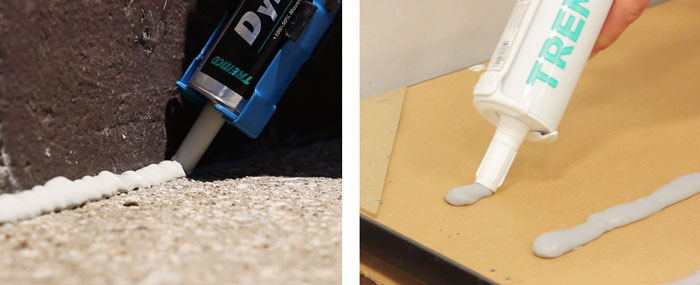
Definitions
- Silicone Sealants: These viscoelastic materials, often made from silica and polymers, fill gaps and resist water.
- Adhesives: Formulated from polymers or resins, adhesives create strong bonds between surfaces, often with a lap shear strength exceeding 1000 psi.
Key Differences
Strength and Form
Silicone sealants are flexible, with a typical lap shear strength below 1000 psi, making them suitable for gap filling. In contrast, adhesives are more rigid and durable, often boasting a lap shear strength over 1000 psi, making them ideal for bonding surfaces.
Components and Formulation
The formulation of adhesives uses primarily polymers and resins, enhancing their bonding capabilities due to cross-linking. Meanwhile, silicone sealants incorporate silica, chalk, cellulose, and pigments, which reduce adhesiveness but increase flexibility and elasticity.
Performance Comparison
Here’s a detailed table comparing the performance characteristics:
| Attribute | Silicone Sealants | Adhesives |
|---|---|---|
| Strength (Lap Shear) | Typically below 1000 psi | Generally exceeds 1000 psi |
| Flexibility | High, effective for filling gaps | Low, designed for rigid bonding |
| Water Resistance | Excellent | Varies depending on formulation |
| Components | Silica, chalk, cellulose, pigments, polymers | Primarily polymers and resins |
| Application Scenarios | Bathrooms, kitchens, gap filling | Fixture mounting, surface bonding |
- Silicone Sealants:
- Bathrooms: Seal gaps around bathtubs and sinks to prevent water damage.
- Kitchens: Use around countertops and backsplashes to maintain hygiene.
- Adhesives:
- Furniture Assembly: Bond parts securely for long-lasting stability.
- DIY Projects: Ensure strong connections between various materials.
Understanding these differences helps you choose the right product, ensuring the durability and success of your home improvement tasks.
Key Components and Characteristics
Understanding the key components and characteristics of silicone sealants and adhesives helps you choose the right product for your project. Each has unique properties influencing their performance and application.
Composition
Adhesives:
- Polymers or Resins: The primary component providing strong and lasting bonds.
- Additives: Enhance properties such as flexibility, curing speed, and temperature resistance.
Examples of Adhesives:
- Epoxies: Known for high strength and durability.
- Urethane Systems: Offer excellent adhesion and flexibility.
- Thermosetting Acrylics: Strong, heat-resistant bonds.
- Cyanoacrylates: Fast-setting and suitable for small repairs.
- Methyl Methacrylates: Superior toughness and impact resistance.
Sealants:
- Silica and Polymers: Form the base, making sealants viscoelastic.
- Additives: Include chalk, cellulose, and pigments to reduce adhesiveness and enhance specific qualities.
Examples of Sealants:
- Silicones: Provide flexibility and water resistance.
- Urethanes: Known for their strong adhesive and sealing properties.
- Solvent-Based Acrylics: Used in various sealing applications.
- Polysulfides: Offer excellent chemical resistance and flexibility.
Strength and Flexibility
Adhesives:
- Shear Strength: Typically exceed 1000 psi lap shear, making them durable and suitable for creating robust connections.
- Rigidity: Designed to bond surfaces firmly over long periods, ensuring permanent attachment.
Sealants:
- Flexibility: Characterized by their ability to remain elastic, accommodating movement and preventing cracks.
- Lower Shear Strength: Usually below 1000 psi lap shear, ideal for filling gaps where structural strength isn’t the primary requirement.
Drying and Curing Times
Adhesives:
- Fast Set Times: Vary from instant bonding in cyanoacrylates to a few hours for epoxies.
- Curing Time: Full strength typically reached after 24–48 hours, depending on the type and environmental conditions.
Sealants:
- Initial Drying: Skins over within minutes to an hour, forming a surface layer.
- Full Cure: May take 24 hours to several days, influenced by thickness, temperature, and humidity levels.
Empowering your home improvement decisions by understanding these distinctions leads to more effective and durable outcomes.
Differences Between Silicone Sealants and Adhesives
When choosing between silicone sealants and adhesives, understanding their distinct properties can help you make the best decision for your specific needs.
Gap-Filling Capabilities
Sealants and adhesives have different abilities when it comes to filling gaps.
Sealants:
- Flexibility and Shrinkage: Sealants are more flexible and can shrink slightly, making them ideal for filling gaps. Their viscoelastic nature allows them to create air-tight, water-tight barriers, perfect for areas prone to movement.
- Applications: Commonly used in bathrooms and kitchens for creating a seal around sinks, tubs, and countertops.
Adhesives:
- Solidification and Viscosity: Adhesives don’t solidify fully and remain less viscous, which means they are less effective at filling significant gaps.
- Binding Strength: Designed to bond surfaces strongly with higher shear strength, typically over 1000 psi.
Temperature and Chemical Resistance
Choosing the right product depends on environmental conditions.
Sealants:
- Temperature Resistance: Silicone sealants perform well under varying temperatures, remaining stable and effective in both high and low temperatures.
- Chemical Resistance: Highly resistant to chemicals, sealants continue to function well in chemically harsh environments, such as industrial settings.
Adhesives:
- Temperature Conditions: Epoxies and urethane systems can withstand a range of temperatures but may degrade faster under extreme conditions compared to sealants.
- Chemical Stability: Adhesives might not resist chemicals as effectively as sealants, making them less suitable for environments where chemical contact is frequent.
Typical Applications
Choosing between a sealant and adhesive depends on the application.
Sealants:
- Household Use: Ideal for sealing joints in bathrooms and kitchens. Their flexibility accommodates movement in structures and prevents water and air from seeping through.
- Industrial Settings: Used in environments that require filling gaps where flexible movement and chemical resistance are priorities.
Adhesives:
- Construction: Used in construction to bond materials like wood, metal, and plastic. Their high shear strength ensures a durable and permanent connection.
- Automotive: Adhesives find applications in the automotive industry for bonding parts that require high strength and durability.
| Criteria | Adhesives | Sealants |
|---|---|---|
| Shear Strength | Typically > 1000 psi | Less than 1000 psi |
| Flexibility | Low, designed for rigidity | High, flexible to accommodate movement |
| Gap-Filling Capability | Low, remains less viscous | High, can fill and seal gaps |
| Temperature Resistance | Moderate to high | High, retains properties in varying temperatures |
| Chemical Resistance | Moderate, varies by type | High, excellent in harsh environments |
| Typical Applications | Construction, automotive | Household, industrial |
Understanding these differences matters when selecting products for different applications. These criteria ensure the right choice for long-lasting, effective results.
When to Use Silicone Sealants
Silicone sealants excel in various applications where flexibility and resistance to moisture are crucial. These sealants fill gaps and create barriers against air and water, making them invaluable for specific situations.
Sealing Joints and Gaps
Silicone sealants are ideal for sealing joints and gaps:
- Building Exteriors: Use silicone sealants to fill expansion joints and other gaps on the exterior of buildings to maintain a weatherproof barrier.
- Windows and Doors: Apply sealants around window and door frames for energy efficiency and protection against moisture.
- Roof Seams: Ensure leak prevention by sealing seams and flashing on roofs, especially in areas vulnerable to water ingress.
- HVAC Systems: Seal air ducts and vents to improve efficiency and prevent air leakage.
Plumbing and Wet Areas
For areas exposed to water, silicone sealants provide effective sealing:
- Bathrooms: Use silicone sealants around bathtubs, showers, and sinks to create watertight seals, preventing leaks and water damage.
- Kitchens: Apply around kitchen sinks and countertops to safeguard against water infiltration and mold growth.
- Pipes and Fixtures: Seal joints in plumbing pipes and fixtures to avoid leaks and maintain system integrity.
- Aquariums: Ensure the structural integrity of aquariums by sealing the glass panels with silicone sealant.
Here’s a data-rich table summarizing key properties and applications:
| Property | Silicone Sealants |
|---|---|
| Elasticity | High |
| Shear Strength | < 1000 psi |
| Water Resistance | Excellent |
| Typical Applications | Bathrooms, kitchens, windows, doors, HVAC systems, aquariums |
Summary
Use silicone sealants for their flexibility, water resistance, and ability to fill and seal various joints and gaps, especially in areas exposed to moisture. Employing silicone sealants in the right situations ensures long-lasting and effective solutions.
When to Use Silicone Adhesives
Silicone adhesives offer unique benefits in various applications due to their exceptional properties. They’re particularly valued for their flexibility and resistance to extreme conditions.
Bonding Surfaces
Silicone adhesives excel in bonding surfaces that need flexibility and resistance to environmental factors. These adhesives are perfect for:
- Electronics: Used to bond components within devices, they resist heat and maintain elasticity.
- Automotive: Essential for attaching parts that experience vibration and temperature fluctuations.
- Construction: Useful for bonding materials like glass, metal, and plastic due to their ability to withstand weather conditions.
Construction and Industrial Use
Silicone adhesives find extensive applications in construction and industrial settings where durability and resistance are necessary. They are commonly used for:
- HVAC Systems: Bonding and sealing components to ensure airtight and watertight connections.
- Aerospace: Providing strong bonds for components that encounter high stress and extreme environmental conditions.
- Marine Applications: Used for sealing and bonding components exposed to water, such as in boats and underwater equipment.
| Use Case | Environment | Key Property | Example Application |
|---|---|---|---|
| Electronics | Indoor | Heat Resistance | Bonding circuit boards |
| Automotive | Varying Climate | Vibration Resistance | Attaching engine parts |
| Construction | Outdoor/Indoor | Weather Resistance | Sealing windows and doors |
| HVAC Systems | Indoor | Airtight Seal | Connecting ductwork |
| Aerospace | Extreme Weather | Stress Resistance | Bonding aircraft panels |
| Marine | Submerged | Water Resistance | Sealing boat hulls |
Utilizing silicone adhesives in these scenarios ensures strong, reliable bonds capable of withstanding the demands of various environments and applications.
Common Myths and Misconceptions
Silicone sealants and adhesives are often misunderstood, leading to confusion in their correct usage. It’s crucial to dispel these myths to make informed decisions.
Silicone as Adhesive and Sealant
- Interchangeability Myth: All silicones aren’t identical. Silicone sealants and adhesives have distinct formulations and properties. Silicone sealants such as those used in bathrooms and kitchens are designed to fill gaps and provide airtight or watertight seals. In contrast, silicone adhesives have higher rigidity and are meant for bonding materials.
- Industrial vs. Consumer-Grade: Not all silicones are suitable for bonding. Industrial-grade adhesives possess significantly higher adhesive strength compared to consumer-grade sealants. For instance, a sealant might have a shear strength of below 1000 psi, while adhesives often exceed this strength, making them more suitable for permanent bonding applications.
Terminology
- Sealants vs. Adhesives: The terms “silicone sealant” and “silicone adhesive” are often confused. Sealants are viscoelastic, designed to seal gaps and remain flexible. Adhesives are rigid, formulated for strong bonding between surfaces. Understanding this differentiation aids in selecting the correct product for specific needs.
Durability and Longevity
Silicone products vary in durability and longevity based on their formulations and applications.
- Sealants: Silicone sealants offer excellent durability, resisting environmental factors like UV radiation, temperature fluctuations, and chemicals. They remain flexible over time, accommodating movements in structures. For example, they’re ideal for sealing joints in building exteriors.
- Adhesives: Silicone adhesives are designed for high durability and strong bonds. They withstand extreme conditions and ensure long-lasting connections. Their rigidity and toughness make them suitable for demanding applications like automotive or aerospace industries.
| Property | Silicone Sealant | Silicone Adhesive |
|---|---|---|
| Composition | Silica and polymers | Polymers or resins |
| Application | Filling gaps, sealing | Bonding surfaces |
| Strength | < 1000 psi | > 1000 psi |
| Flexibility | High | Low |
| Durability | Excellent in sealing | High in bonding |
Application Techniques
Proper application techniques ensure the effectiveness of silicone sealants and adhesives.
- Preparation: Clean the surfaces thoroughly before applying silicone. Remove all dust, grease, and previous sealant or adhesive residues.
- Using Sealants:
- Cut the nozzle at a 45-degree angle for controlled application.
- Apply a continuous bead along the gap.
- Smooth the sealant with a wet finger or tool for an even finish.
- Using Adhesives:
- Distribute the adhesive evenly on one surface.
- Press the surfaces together firmly for the recommended time.
- Secure with clamps or weights if necessary, depending on the setting time.
Summary
Dispel myths about silicone products by understanding their specific formulations and applications. Silicone sealants fill gaps and provide flexibility, while adhesives offer strong bonds and rigidity. Ensure optimal usage by following proper preparation and application techniques.
Conclusion
Understanding the distinct roles of silicone sealants and adhesives can significantly impact the success of your home improvement projects. Silicone sealants offer unmatched flexibility and water resistance, making them perfect for sealing gaps in moisture-prone areas like bathrooms and kitchens. On the other hand, adhesives provide robust, durable bonds essential for securing fixtures and materials in place.
Choosing the right product for your specific needs ensures long-lasting results, saving you both time and money. Whether you’re sealing joints or bonding surfaces, knowing when to use silicone sealants or adhesives is key to achieving optimal performance in your projects.
Frequently Asked Questions
What is the primary difference between silicone sealant and adhesive?
Silicone sealants are flexible and water-resistant, making them ideal for sealing gaps. Adhesives, on the other hand, are designed to create strong bonds between materials, ensuring fixtures remain securely in place.
When should I use silicone sealant instead of adhesive?
Use silicone sealant for applications requiring flexibility and moisture resistance, like sealing joints and gaps in bathrooms, kitchens, and plumbing areas. Adhesives are better for projects needing strong, rigid bonds.
Are adhesives stronger than silicone sealants?
Yes, adhesives generally have a higher lap shear strength exceeding 1000 psi, making them ideal for strong, durable connections. Silicone sealants typically have a lap shear strength below 1000 psi and are better for flexible gap filling.
Can silicone sealants be used in high-temperature environments?
Yes, silicone sealants perform well under varying temperatures and are highly resistant to chemicals, making them suitable for high-temperature and chemically-resistant applications.
What are some common applications for silicone sealants?
Silicone sealants are commonly used in bathrooms, kitchens, around windows and doors, roof seams, HVAC systems, plumbing areas, and aquariums to create watertight seals and prevent leaks.
How do adhesives and sealants differ in terms of gap-filling capabilities?
Sealants are more flexible and can create airtight, watertight barriers, making them suitable for areas prone to movement. Adhesives are less effective at filling significant gaps but provide strong binding strength.
What are silicone adhesives used for?
Silicone adhesives are used in applications requiring strong, flexible bonds and resistance to extreme conditions, such as in electronics, automotive, construction, HVAC systems, aerospace, and marine applications.

